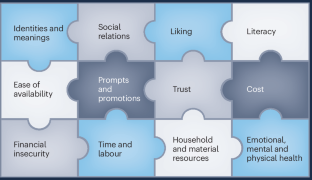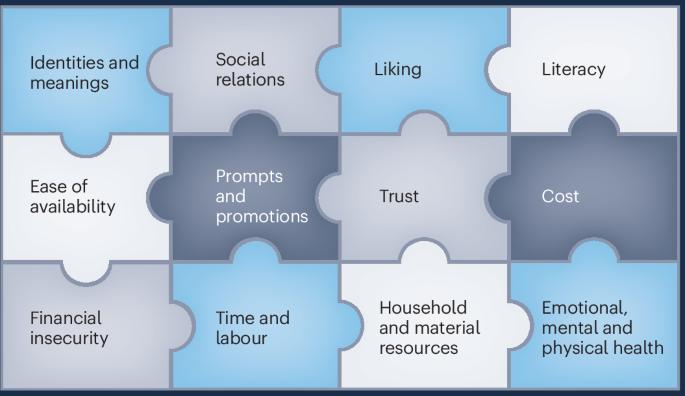The full picture of people’s realities must be considered to deliver better diets for all
IF 23.6
Q1 FOOD SCIENCE & TECHNOLOGY
引用次数: 0
Abstract
Efforts to address poor-quality diets have stepped up considerably in recent years, but the problem of inadequate, unhealthy, unsustainable and unequal diets persists. Here we argue that to get policies and interventions working more effectively and equitably, a fresh approach is needed—one that considers the full picture of people’s realities. People’s realities interact to shape the way people respond to and engage with policies and interventions, thereby influencing their impact, particularly, albeit not only, on dietary inequalities. We propose a tool that brings together key realities that shape impact, including the material, economic and psychosocial realities that people face in their households, families, food environments, social interactions and cultures. The purpose of the tool is to help policymakers, intervention practitioners and researchers committed to improving diets achieve greater success by helping them think through the full picture of people’s realities when identifying, designing, implementing and evaluating policies and interventions. Engaging with people’s realities is key to the success of policies and interventions aimed at achieving better diets for all. Drawing on social practice theory, this Perspective proposes a tool—the full picture—to help researchers, practitioners and policymakers think through the full range of people’s interacting realities that shape the impact of policies and interventions designed to improve diets.


必须全面考虑人们的实际情况,为所有人提供更好的饮食
近年来,解决劣质饮食问题的努力已大大加强,但饮食不足、不健康、不可持续和不平等的问题依然存在。在此,我们认为,要使政策和干预措施更有效、更公平地发挥作用,就需要一种全新的方法--一种考虑到人们现实全貌的方法。人们的现实情况相互作用,形成了人们对政策和干预措施的反应和参与方式,从而影响了政策和干预措施的效果,特别是对饮食不平等的影响,尽管不仅仅是饮食不平等。我们提出了一种工具,它汇集了影响效果的关键现实,包括人们在家庭、家人、饮食环境、社会交往和文化中所面临的物质、经济和社会心理现实。该工具旨在帮助致力于改善膳食的政策制定者、干预措施实施者和研究人员在确定、设计、实施和评估政策和干预措施时全面考虑人们的实际情况,从而取得更大的成功。
本文章由计算机程序翻译,如有差异,请以英文原文为准。
求助全文
约1分钟内获得全文
求助全文

 求助内容:
求助内容: 应助结果提醒方式:
应助结果提醒方式:


